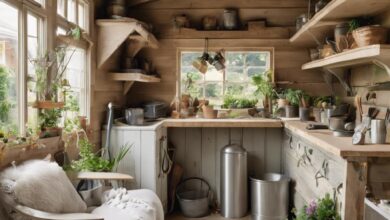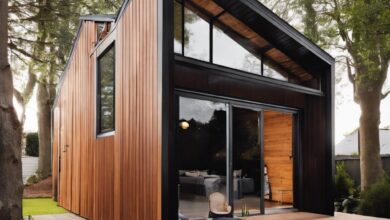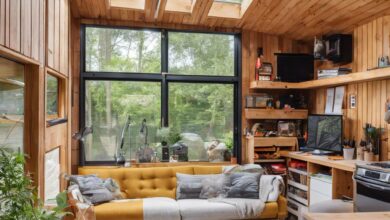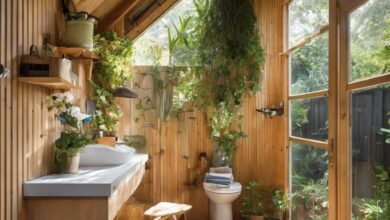Sustainable Style: Modern Shed Constructed with Eco-Friendly Materials
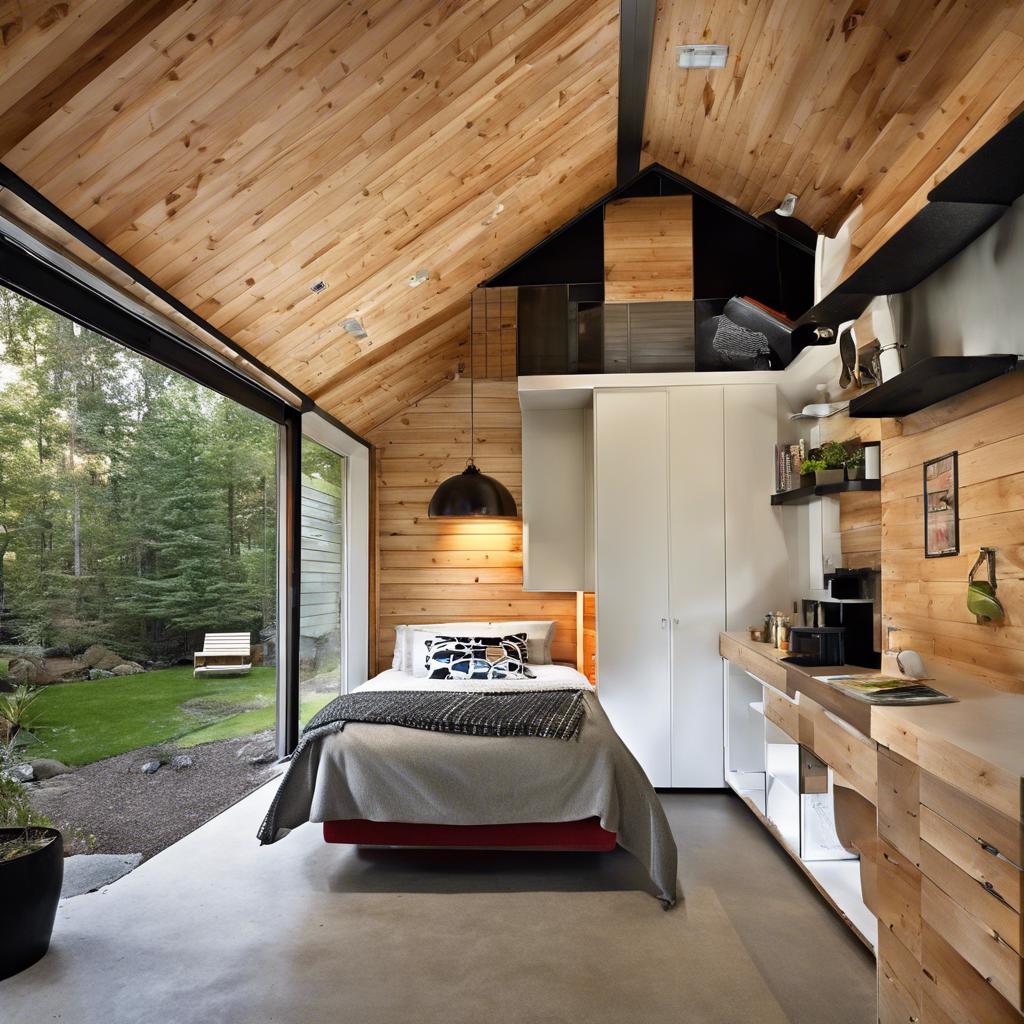
In the ever-evolving world of architecture and design, sustainability has become an increasingly important aspect to consider. One innovative example of this trend is the modern shed constructed with eco-friendly materials. From utilizing reclaimed wood to incorporating energy-efficient elements, this sustainable style offers a unique blend of functionality and environmental consciousness. Join us as we explore the fascinating world of eco-friendly design in the form of a modern shed.
Table of Contents
- Overview of Sustainable Design Principles Integrated in Modern Shed
- Innovative Use of Recycled and Upcycled Materials in Construction
- Benefits of Incorporating Green Roof Technology in Shed Design
- Energy-Efficient Features and Sustainable Practices Utilized in Building Process
- Importance of Locally Sourced Materials for Eco-Friendly Construction
- Implementing Natural Lighting and Ventilation for Reduced Energy Consumption
- Choosing Non-Toxic Finishes and Sealants for Healthy Indoor Air Quality
- Maximizing Space Efficiency and Functionality in Small Sustainable Sheds
- Tips for Maintaining and Upkeeping an Eco-Friendly Shed Year-Round
- The Future of Sustainable Architecture: Trends and Innovations in Green Building
- Inspiring Examples of Modern Sheds Constructed with Sustainable Materials
- Q&A

Overview of Sustainable Design Principles Integrated in Modern Shed
Eco-conscious homeowners rejoice! Modern sheds are not just for storage anymore. They can also be a stylish and sustainable addition to your property. By incorporating eco-friendly materials and design principles, these modern sheds are not only aesthetically pleasing but also environmentally responsible.
One key aspect of sustainable design in modern sheds is the use of reclaimed and recycled materials. This not only reduces waste but also gives the shed a unique and rustic look. Popular materials include reclaimed wood, recycled metal, and salvaged glass. By incorporating these materials, modern sheds can help reduce the demand for new resources and minimize the environmental impact of construction.
In addition to using reclaimed materials, modern sheds are also designed with energy efficiency in mind. Features such as LED lighting, low-flow fixtures, and energy-efficient windows help reduce energy consumption and lower utility bills. By incorporating these sustainable design principles, modern sheds can not only enhance the aesthetic appeal of your property but also contribute to a greener future.

Innovative Use of Recycled and Upcycled Materials in Construction
Eco-friendly construction is on the rise, with more and more designers and builders looking for innovative ways to incorporate recycled and upcycled materials into their projects. One prime example of sustainable style is the construction of a modern shed using solely eco-friendly materials.
Instead of traditional building materials like concrete and wood, this modern shed is constructed using a combination of recycled steel beams, reclaimed wood planks, and repurposed glass windows. These materials not only reduce the environmental impact of construction but also give the shed a unique and stylish look that sets it apart from typical structures.
By thinking outside the box and utilizing recycled and upcycled materials, the designers of this modern shed have created a sustainable building that showcases the beauty and versatility of eco-friendly construction. This project serves as a reminder that with a little creativity and innovation, we can build structures that are not only environmentally friendly but also visually stunning.

Benefits of Incorporating Green Roof Technology in Shed Design
When designing a modern shed, incorporating green roof technology can provide numerous benefits that go beyond just aesthetics. By using eco-friendly materials, such as recycled wood and metal, you can create a structure that not only looks stylish but also reduces its environmental impact. A green roof not only adds a touch of natural beauty to the shed but also helps to insulate the space, reducing energy consumption and costs.
One of the key advantages of incorporating green roof technology in shed design is its ability to promote biodiversity. By creating a habitat for plants and wildlife on top of the shed, you can help support local ecosystems and encourage the presence of beneficial insects and birds. This can contribute to a healthier environment overall and create a more sustainable living space.
Furthermore, green roofs can help to mitigate the effects of climate change by absorbing carbon dioxide and reducing stormwater runoff. By choosing to build a shed with green roof technology, you are not only making a stylish choice but also a responsible one that can have a positive impact on the environment for years to come.
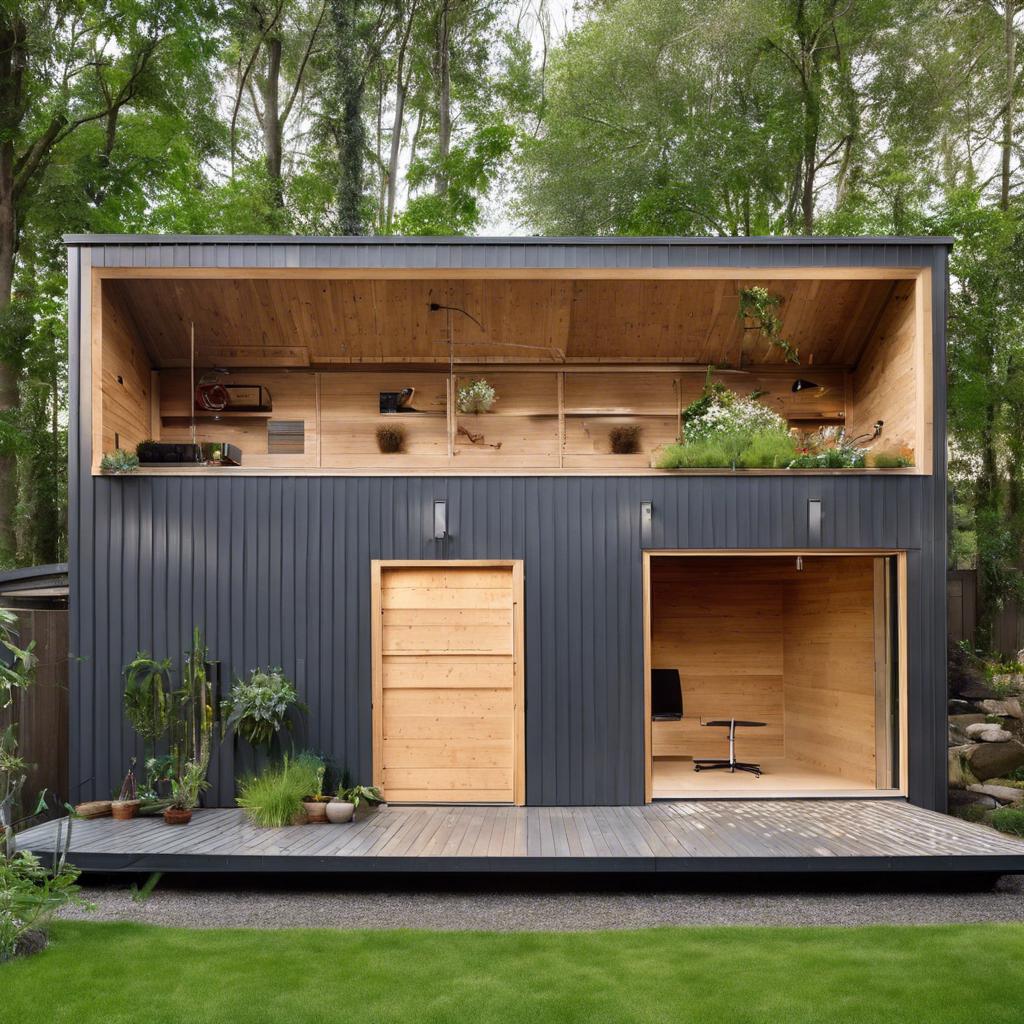
Energy-Efficient Features and Sustainable Practices Utilized in Building Process
When it comes to constructing a modern shed with sustainable practices, eco-friendly materials are key. In our project, we focused on incorporating energy-efficient features that not only reduce our carbon footprint but also contribute to a more environmentally conscious design. One of the primary materials used in the building process was reclaimed wood, sourced locally to minimize transportation emissions and support sustainable forestry practices.
Additionally, we utilized low-VOC paint and finishes throughout the shed to ensure a healthier indoor air quality for the occupants. This conscious decision not only benefits the environment but also promotes the well-being of those using the space. By prioritizing eco-friendly materials and practices, we were able to create a stylish modern shed that aligns with our commitment to sustainability.
The design of the shed also includes energy-efficient features such as solar panels on the roof, which harness renewable energy to power the electrical systems. This innovative approach not only reduces the shed’s reliance on non-renewable energy sources but also saves money on utility bills in the long run. By integrating sustainable practices into every step of the building process, we were able to create a functional and stylish space that reflects our dedication to eco-conscious living.
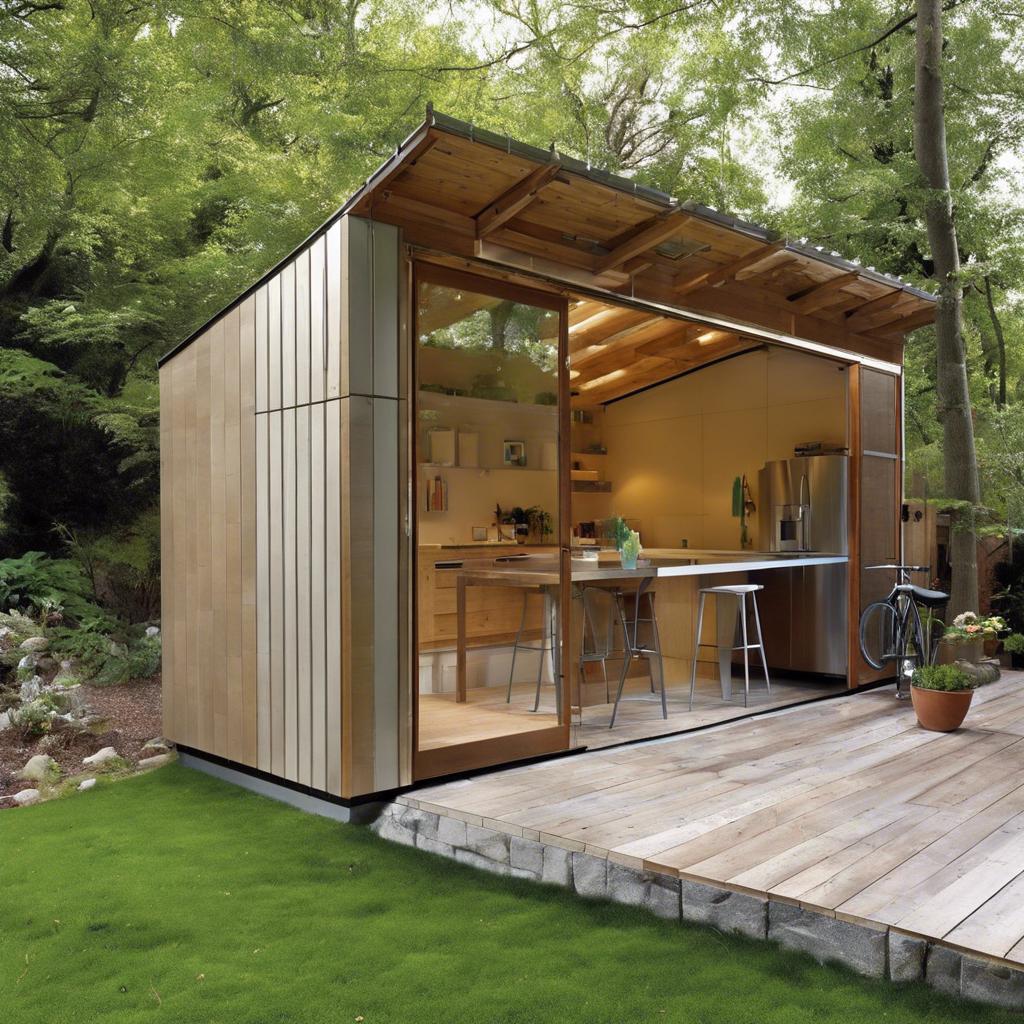
Importance of Locally Sourced Materials for Eco-Friendly Construction
Eco-friendly construction practices have gained popularity in recent years, with more homeowners opting for sustainable materials to reduce their environmental impact. Locally sourced materials play a crucial role in eco-friendly construction by minimizing transportation emissions and supporting local businesses. Using materials sourced from nearby suppliers decreases the carbon footprint of a project and promotes sustainable building practices.
One innovative example of sustainable construction is the modern shed, designed with eco-friendly materials in mind. By using reclaimed wood, recycled metal, and energy-efficient windows, this modern shed showcases how stylish and functional structures can be built with sustainable materials. Not only does it reduce waste and promote recycling, but it also demonstrates that eco-friendly construction can be aesthetically pleasing and on-trend.
Embracing the use of locally sourced materials in construction projects not only benefits the environment but also supports the local economy. By choosing materials from nearby sources, homeowners can contribute to the growth of local businesses and reduce the environmental impact of their building projects. Sustainable construction practices, such as using eco-friendly materials and sourcing locally, are essential steps towards creating a more sustainable future for generations to come.
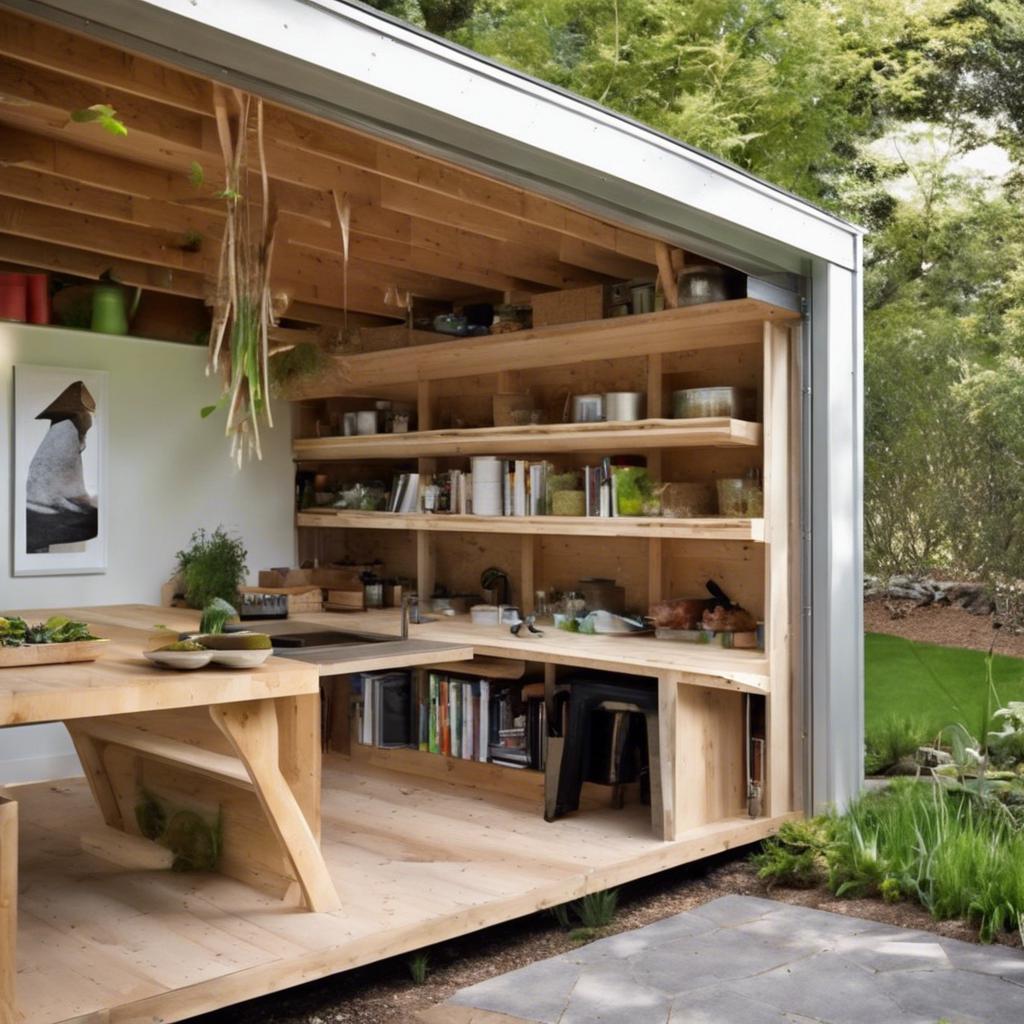
Implementing Natural Lighting and Ventilation for Reduced Energy Consumption
When it comes to designing a sustainable and energy-efficient modern shed, incorporating natural lighting and ventilation is essential. By maximizing the use of sunlight and fresh air, you can reduce the need for artificial lighting and air conditioning, ultimately lowering energy consumption and costs. Utilizing eco-friendly materials, such as energy-efficient windows and skylights, can help create a well-lit and airy space that promotes a healthier environment.
One way to implement natural lighting in a modern shed is by installing large windows or glass doors that allow ample sunlight to enter the space. This not only brightens up the interior but also helps to reduce the use of electric lighting during the day. Additionally, incorporating skylights or light tubes can further enhance the natural light flow, creating a more inviting and sustainable environment.
For ventilation, adding operable windows or vents can help regulate airflow and temperature, reducing the need for air conditioning. By strategically placing windows and vents, you can promote cross ventilation and cooling breezes, enhancing the overall comfort of the shed. With careful planning and design, you can create a modern shed that not only looks stylish but also prioritizes sustainability and energy efficiency.

Choosing Non-Toxic Finishes and Sealants for Healthy Indoor Air Quality
When it comes to creating a sustainable and eco-friendly space, choosing non-toxic finishes and sealants is crucial for maintaining healthy indoor air quality. By opting for products that are free from harmful chemicals and volatile organic compounds (VOCs), you can ensure that your living or working environment is safe and healthy for all occupants.
There are many eco-friendly options available on the market today that provide both style and sustainability. Some popular non-toxic finishes and sealants include:
-
- Water-based finishes
-
- Milk paint
-
- Natural oils (such as linseed or tung oil)
-
- Beeswax or carnauba wax
When constructing a modern shed or any other type of space, it’s important to consider the environmental impact of the materials used. By incorporating eco-friendly finishes and sealants into your design, you can create a stylish and sustainable space that promotes good indoor air quality and overall well-being.

Maximizing Space Efficiency and Functionality in Small Sustainable Sheds
When it comes to , using eco-friendly materials is key. By opting for environmentally conscious options, you can create a modern shed that not only serves its purpose but also contributes to a more sustainable lifestyle.
One way to achieve this is by utilizing reclaimed wood for the shed’s construction. Reclaimed wood not only adds a rustic charm to the shed but also helps reduce the demand for new timber, thereby minimizing deforestation. Additionally, incorporating energy-efficient windows and insulation can help regulate temperature and reduce energy consumption.
Organizing the interior of the shed is equally important. Implementing smart storage solutions, such as built-in shelving, hooks, and multi-functional furniture, can help maximize space efficiency and functionality. Consider using vertical space for storage and installing a workbench that can double as a table. With careful planning and design, even a small shed can offer ample storage and workspace.
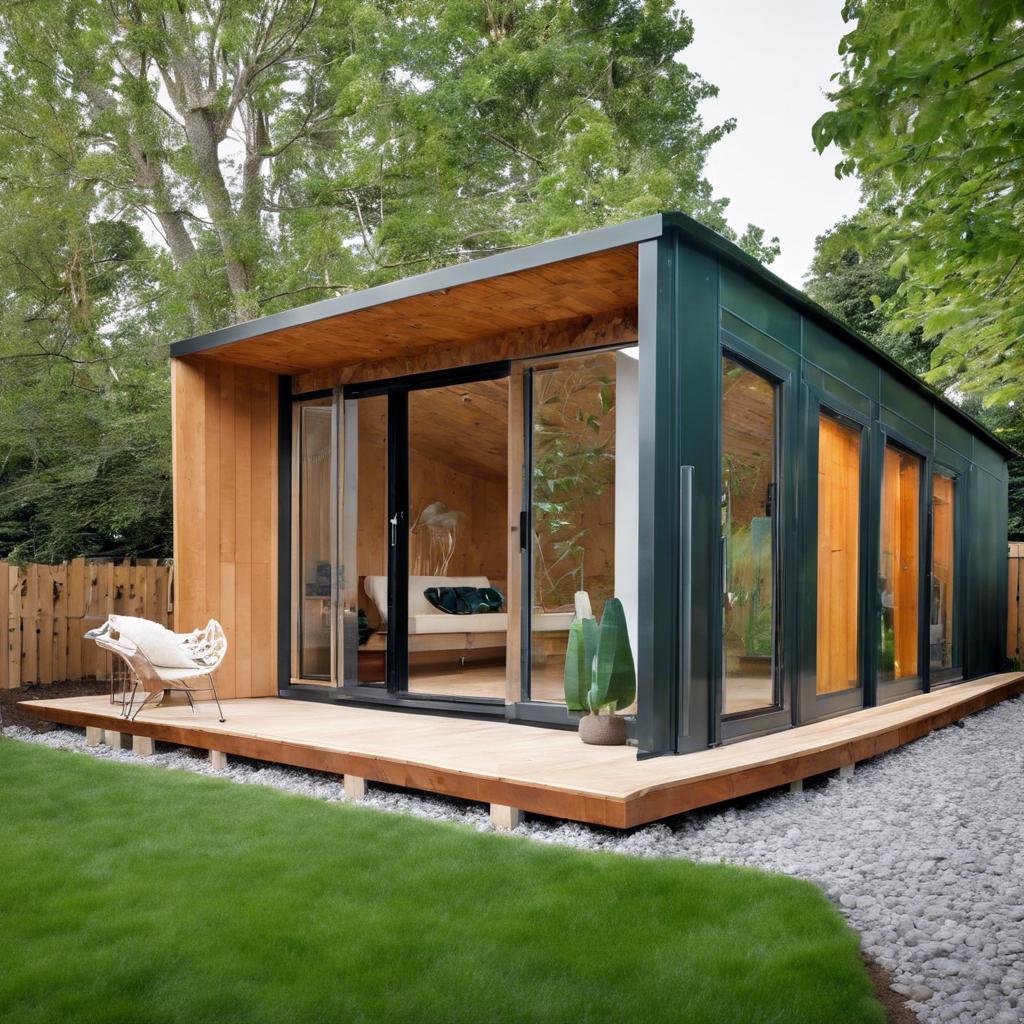
Tips for Maintaining and Upkeeping an Eco-Friendly Shed Year-Round
When it comes to maintaining an eco-friendly shed year-round, there are several tips and tricks that can help ensure sustainability and reduce your carbon footprint. One of the most important factors to consider is the materials used in the construction of your shed. Opt for eco-friendly materials such as reclaimed wood, recycled metal, or sustainably sourced bamboo. These materials not only look stylish but also help minimize environmental impact.
Another tip for upkeeping an eco-friendly shed is to invest in energy-efficient lighting. Opt for LED lights or solar-powered lighting to reduce energy consumption and decrease electricity bills. Additionally, consider installing a rainwater harvesting system to collect and store rainwater for watering plants or cleaning purposes. This not only helps conserve water but also reduces reliance on municipal water sources.
Lastly, consider implementing a composting system in your shed to reduce waste and create nutrient-rich soil for your garden. By composting organic waste such as fruit and vegetable peels, coffee grounds, and eggshells, you can minimize landfill waste and promote a more sustainable lifestyle. Remember, small changes can make a big difference when it comes to maintaining an eco-friendly shed year-round.

The Future of Sustainable Architecture: Trends and Innovations in Green Building
Innovations in sustainable architecture are constantly redefining the way we think about environmentally friendly construction. Modern sheds are no exception, with designers and architects exploring new materials and building techniques that prioritize eco-consciousness.
<p>One trend gaining traction in green building is the use of reclaimed and recycled materials. By repurposing wood from old barns or metals from scrapped machinery, designers can give new life to materials that would otherwise end up in landfills. This not only reduces waste but also adds a unique, rustic charm to the structure.</p>
<p>Another innovation in sustainable architecture is the integration of renewable energy sources. Solar panels and wind turbines can be seamlessly incorporated into the design of a modern shed, providing clean, renewable energy to power lights, appliances, and other electrical systems. This not only reduces the building's carbon footprint but also lowers energy costs in the long run.</p>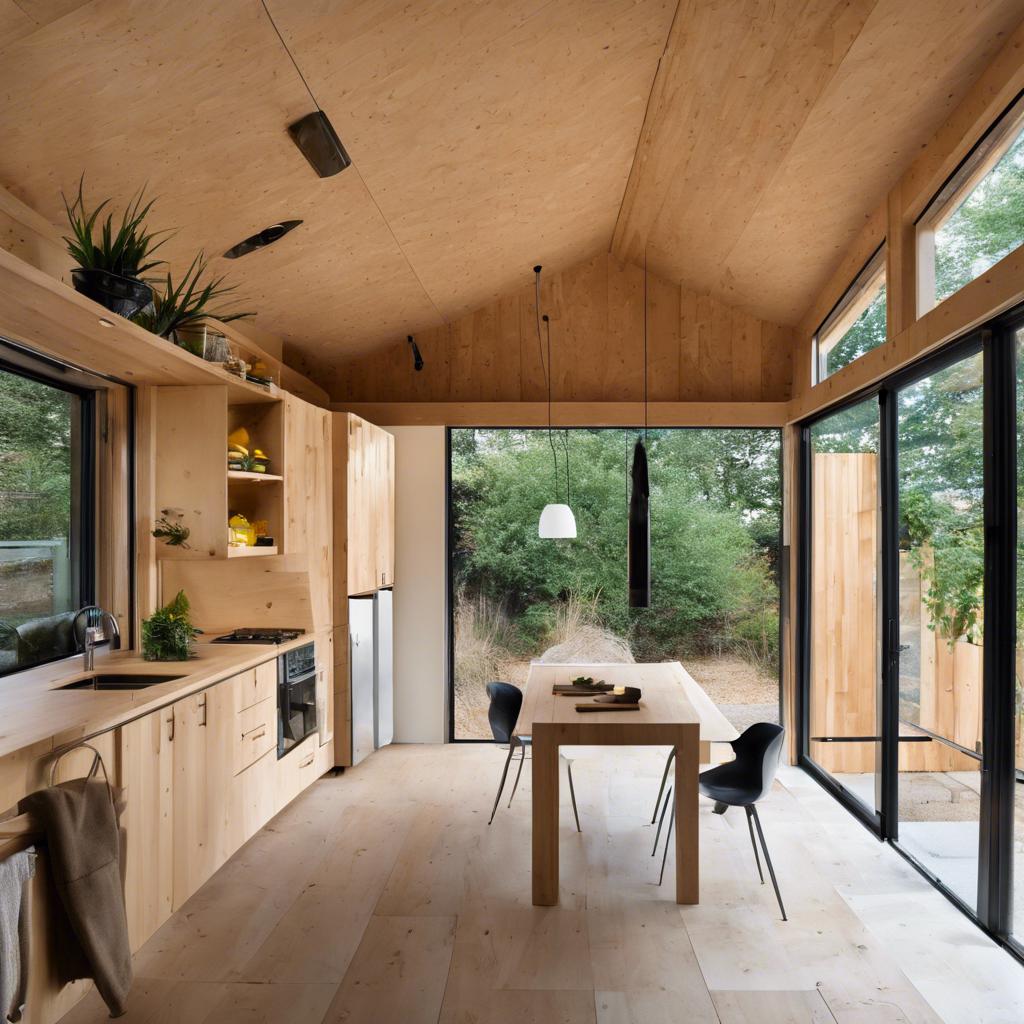
Inspiring Examples of Modern Sheds Constructed with Sustainable Materials
When it comes to modern shed design, sustainability is key. More and more homeowners are opting for eco-friendly materials in their construction projects, creating stunning structures that not only look good but are also good for the environment. From reclaimed wood to recycled metal, there are endless possibilities for creating a stylish and sustainable shed.
One inspiring example of a modern shed constructed with sustainable materials is a sleek cedar structure with a living roof. The use of cedar not only gives the shed a contemporary look but also ensures that the wood is sourced responsibly. The living roof adds a pop of greenery to the design while also providing insulation and promoting biodiversity. This shed is not only beautiful but also eco-friendly.
Another impressive example is a minimalist shed made from reclaimed shipping containers. These containers are not only durable and weather-resistant but also reduce waste by repurposing materials that would otherwise end up in landfills. The clean lines and industrial aesthetic of the containers create a unique and modern look that is sure to turn heads. This shed proves that sustainability and style can go hand in hand.
Q&A
Q: What materials were used to construct the modern shed featured in the article?
A: The modern shed was constructed using eco-friendly materials such as reclaimed wood, recycled metal, and sustainable bamboo.
Q: How does using eco-friendly materials contribute to sustainability?
A: Using eco-friendly materials helps reduce the demand for new resources, minimizes waste, and lowers the environmental impact of construction projects.
Q: What design features make this modern shed a sustainable style choice?
A: The modern shed incorporates energy-efficient windows, natural ventilation, and a green roof to help regulate temperature and reduce the need for artificial heating and cooling.
Q: How can individuals incorporate sustainable design principles into their own building projects?
A: Individuals can incorporate sustainable design principles by using recycled or reclaimed materials, choosing energy-efficient appliances and fixtures, and incorporating passive design strategies to reduce energy consumption.
Q: What are the benefits of using eco-friendly materials in construction projects?
A: Using eco-friendly materials can help improve indoor air quality, reduce energy consumption, lower utility bills, and contribute to a healthier environment for future generations.
